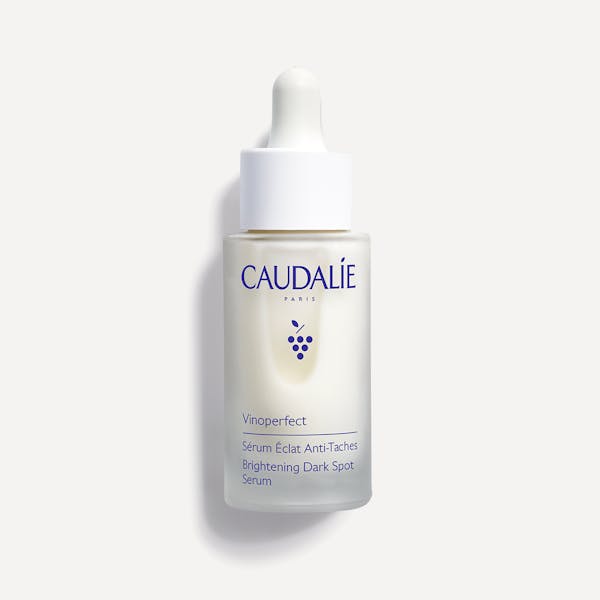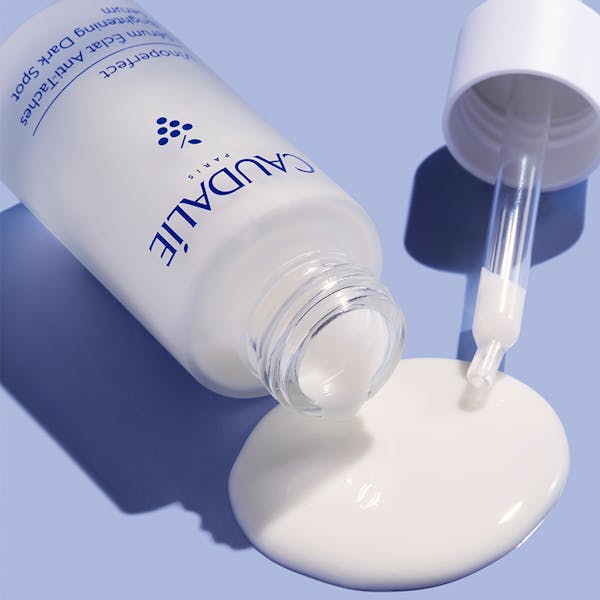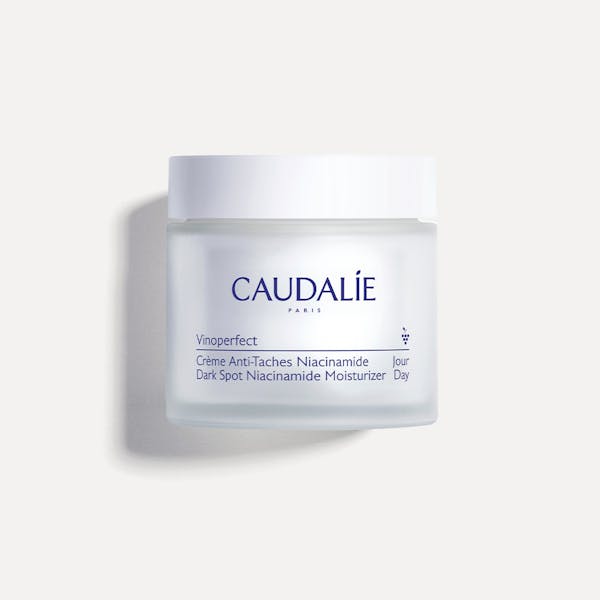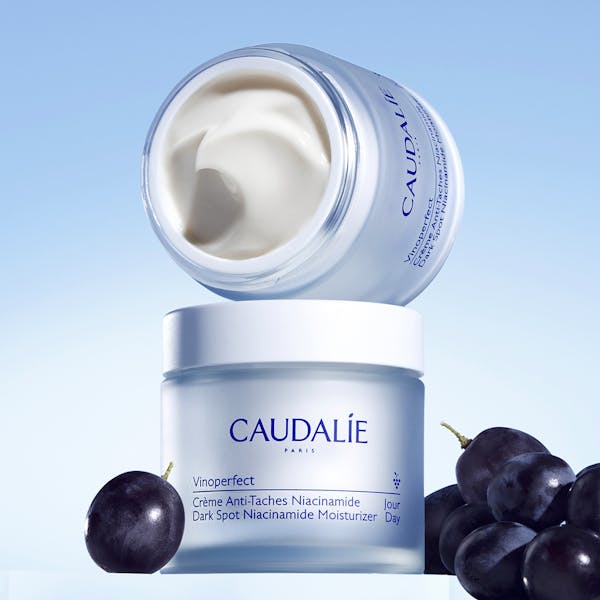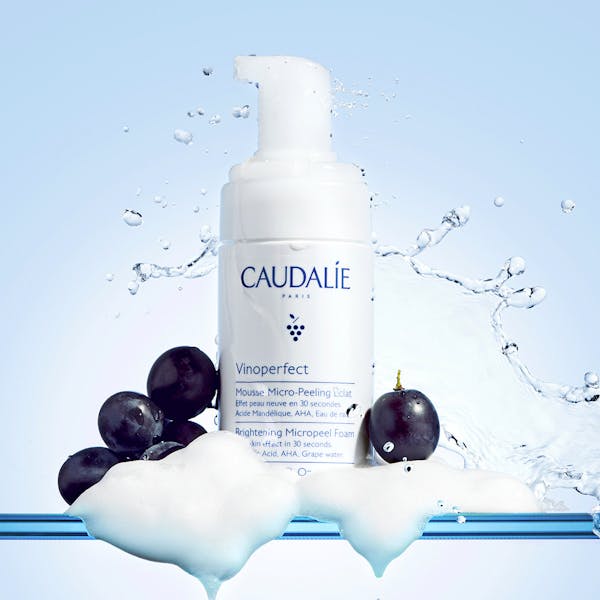Do sunspots bother you and want to improve your complexion? You’ve come to the right place. These spots can be challenging to remove. Plus, they can return if you like spending time at the beach on a hot day. So how do you correct this discolouration and prevent dark spots from returning?
The secret is identifying the right treatment. Not every product is made to target this problem. Lucky for you, this post will help you identify the perfect solution. Let’s start by getting to know these spots better. What are they, and where do they come from?
Summary
What are sun spots ?
Sunspots on skin are also called solar lentigines or lentigos. They’re a form of hyperpigmentation that gives you dark spots on the face, just like freckles. But the two skin conditions are different. Unlike freckles, lentigines don’t fade during winter and usually affect middle-aged people and above. For that reason, you’ll often hear them called age spots.
Sometimes, it might be easy to confuse the different types of hyperpigmentation that exist. Therefore, seeking a proper diagnosis from a skincare expert is essential. Below are the symptoms to help you identify solar lentigines.
Symptoms of sun spots
The first sign of sunspots is uneven skin tone. Your normal skin appears light, while the hyperpigmented areas appear darker. As you get more sun exposure, the spots can get bigger and larger, making them more noticeable. However, the surface isn’t painful when touched so treating them is usually optional. People seek treatment for aesthetic rather than medical reasons.
Causes of sun spots
Sunspots on face come from spending too much time in the sun. They can appear when you participate in outdoor sports, work outside, or use the sun to get a tan. UV rays from the sun trigger an increase in melanin production. When melanin is over stimulated, your skin gets darker.
Uneven skin tone comes when melanin clumps together, leading to uneven distribution of this colour pigment. Light skinned adults over 40 years are more likely to get these spots. That’s because most adults have absorbed plenty of UV rays by middle age.
Appearance and location
Sunspots appear on skin areas exposed to the sun. These areas include the face, neck, upper back, shoulders, forearms, and feet. Usually, these spots vary in size, from freckle size to almost an inch. Additionally, they’re smooth, meaning they tend to feel the same as the rest of the skin.
Their colour can range from light brown to dark brown, and their shape can be oval or circular, with sharp borders. Even though they’re common in middle-aged adults, these spots can appear earlier, depending on one’s exposure to the sun. So, when they appear sooner, it’s best to get a diagnosis instead of making assumptions. Caudalie offers diagnosis using a scanner to identify the spots before providing treatment.
How do you prevent sun spots?
Here are ways to help you prevent solar spots.
● Wear sun Sunscreen. Always wear broad-spectrum sunscreen and face sunscreen before going outside – even when it’s cloudy. Choose a sunscreen with high SPF, such as Caudalie’s High Protection Cream with 50 SPF. Apply it after your day cream and face serum.
● Avoid sun exposure. Avoid exposing yourself to the sun between 10 a.m. and 4 p.m., when it’s hottest as this is when the UV rays are most strong.
● Wear protective clothing. Wear protective clothing such as a wide-brimmed hat, sunglasses, and a long-sleeve shirt. Also, look for clothes specifically made to block out UV rays.
How to get rid on your face?
You can eliminate dark marks due to sunburn by using the Vinoperfect Serum or seeking medical treatment from a dermatologist.
Reduce Your Sun Spots With Vinoperfect
Sunspot correction is possible when you have clinically-tested serums, especially the Anti-Dark Spot Serum. This product contains ViniferineTM, which is an alternative to Vitamin C. No doubt vitamin C can lighten the skin by inhibiting the production of melanin, but it can also irritate sensitive skin. On the other hand, viniferine doesn’t irritate, and it’s 62 times more effective than vitamin C (1) and 43% more effective than Niacinamide 10%(2), all while being anti-blue light. Clinically backed and prescribed by dermatologists (3), this serum delivers a –63% reduction in dark spot colour intensity after one bottle.(4)
Vitamin C is effective against dark spots, sunspots, hyperpigmentation and many skin problems.
Another product that can help is the Concentrated Brightening Glycolic Essence. It contains glycolic acid that helps to exfoliate the skin. Once the skin is free from dead cells, it absorbs the Anti-Dark Spot Serum more easily, making the serum twice as effective. So, start by applying the Concentrated Brightening Glycolic Essence. Then after a few minutes, apply the Anti-Dark Spot Serum for better results.
Medical Treatment
Solar lentigos are treated using different methods, such as;
Laser treatment. It uses focused beams of light to destroy the pigmented cells.
Chemical peels. It uses a chemical solution, such as Vinoperfect Glycolic Peel Mask, to remove the skin’s outer layer along with its imperfections.
Dermabrasion. It uses a revolving brush or a diamond-tipped instrument to gently buff away the outer skin. Doing so helps to remove imperfections and encourage the growth of healthy skin.
Intense pulsed light. It uses light waves to target and destroy blemished cells on the skin. The destroyed cells are gradually replaced by new healthy skin.
Are Sun Spots Cancerous
Solar spots are benign cells, which means they don’t spread. So they’re not cancerous and can’t turn into skin cancer. Cancer cells are malignant, meaning they spread on the skin. Unless your spots are spreading, painful, and changing colour, you shouldn’t be worried. Nevertheless, we strongly advise you should get diagnosed to rule out the possibility of cancer. Solar lentigos are harmless and don’t pose any medical threat.
Sunspots are dark or brown marks that appear on the skin due to prolonged exposure to the sun. Even though they’re more common in people over 40, they can also affect young people who spend more time in the sun. So it’s highly advisable to wear sunscreen and avoid sun exposure when possible.
If you have dark patches on your skin, there are treatment options that can help remove them. Medical procedures, such as lasers and dermabrasion, require a skincare expert to administer them. But topical products like Vinoperfect are safe to use at home on your own. If you want to try them, get the Vinoperfect Radiance Routine, which combines three products in one. For the vast majority, this is all it takes to improve sunspots.
(1) In-vitro test of the inhibitory action of Viniferine on tyrosinase.
(2) Ex-vivo test on the amount of melanin in the epidermis.
(3) GERSDATA – GersOrigin, Units dispensed in pharmacies, based on prescriptions from dermatologists, Market: Vinoperfect Serum, in France – Year 2024.
(4) Clinical study, dermatological scoring on dark spot coloration, on 65 volunteers after 56 days.
LATEST BEAUTY NEWS
- Personal data & Cookies
- T&C
- Legal Note
- Loyalty Program
- MYCAUDALIE terms
© Caudalie Copyright
